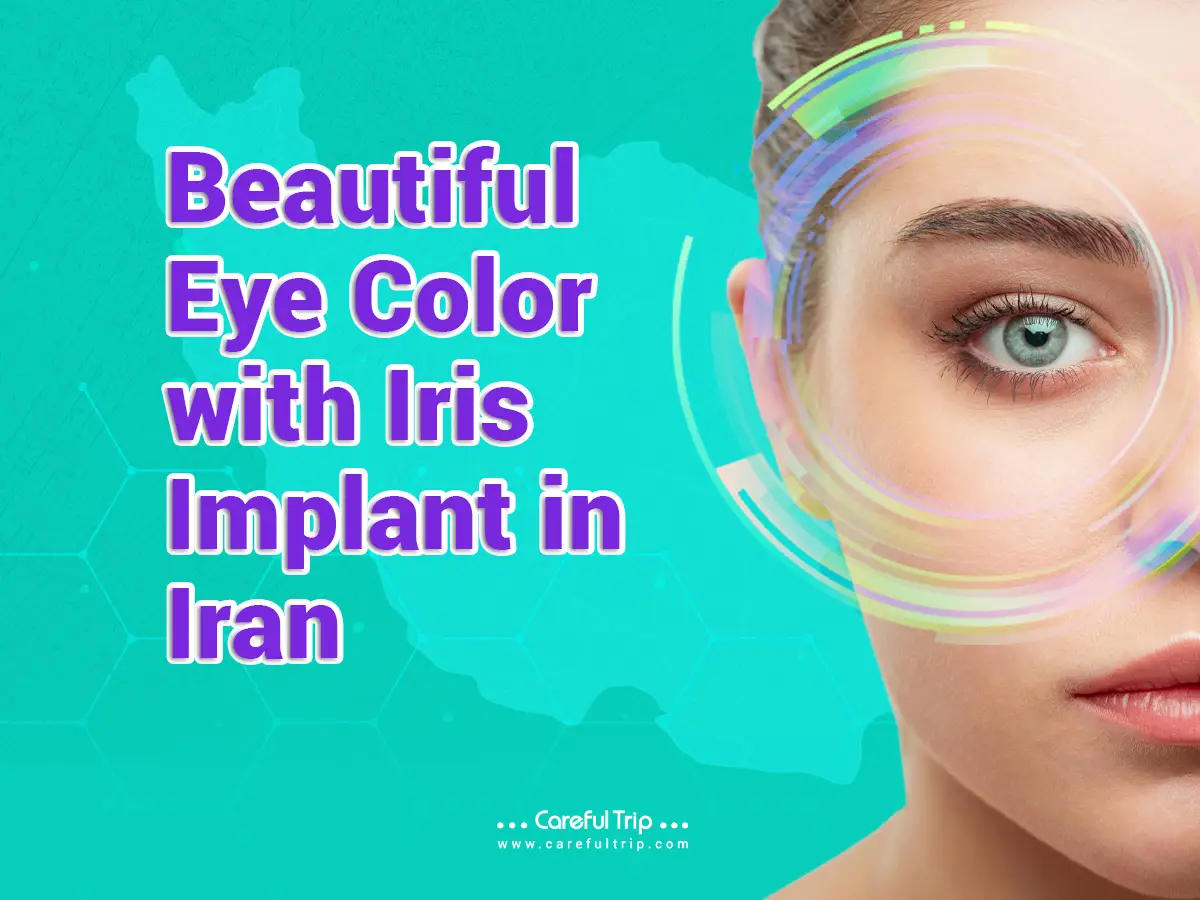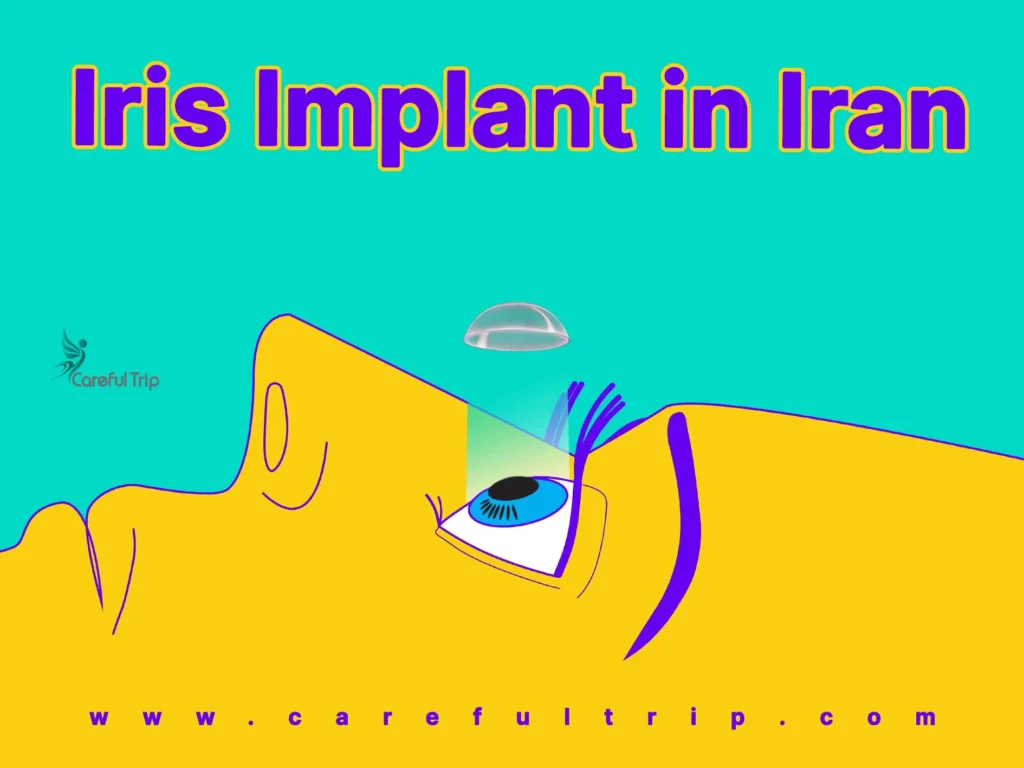
The color of a person’s iris—the colored part of the eye—is determined by genetics, and it plays a crucial role in protecting the eye from excess light. While most people have brown, blue, gray, or green eyes, there is a growing interest in altering iris color for both aesthetic and medical reasons. In recent years, artificial iris implants have become a popular option for individuals seeking to change their eye color. This procedure is now available in Iran, a leading destination for advanced eye care and cosmetic surgeries.
If you’ve ever wondered about the artificial iris implant procedure or if it’s the right choice for you, this article will tell you everything you need to know about this innovative surgery.
What is an Artificial Iris Implant?
An artificial iris is a thin, flexible prosthesis made from non-toxic, tissue-compatible materials used to mimic the natural iris of the eye. These implants have been made with the same materials that are used for intraocular lenses, which have been safely used in cataract surgeries for years. The implant not only enhances the appearance of the eye but also has therapeutic benefits for patients with vision disorders caused by iris defects.
“While colored contact lenses are the safest solution for cosmetic eye color change, surgery may be appropriate if a damaged or abnormally colored iris is causing you distress,” – VerywellHealth
How Does the Iris Work?
The iris, the colored part of the eye, controls how much light enters the eye by adjusting the size of the pupil. The color of the iris is influenced by the amount of melanin, a pigment, it contains. People with darker eyes, like brown or black, have higher amounts of melanin, while lighter eyes, such as blue or green, have lower levels. The iris also serves to protect the eye from harmful UV radiation, acting as a safeguard against bright sunlight and environmental stressors.
However, some people suffer from iris defects due to trauma or certain medical conditions, resulting in incomplete or absent irises. In such cases, artificial iris implants can serve as both a functional and cosmetic solution.
For more information, read:
History of Artificial Iris Implant Surgery
The concept of iris implants has been around since the 1990s. The first artificial iris implantation surgery was performed in 1996 by Dr. Rosenthal and Dr. Rush in Germany. Since then, the procedure has been refined and gained global recognition. Today, many patients from Europe, the Middle East, Asia, and the United States seek iris implant surgeries in countries like Iran, which offers both aesthetic and therapeutic benefits at affordable prices.

Why Choose Artificial Iris Surgery in Iran?
Iran has become a prominent destination for medical tourism, particularly for cosmetic and ophthalmologic procedures like iris implants. Here’s why people are choosing Iran for artificial iris surgery:
1. Advanced Medical Facilities
Modern ophthalmology clinics and hospitals with the newest equipment for eye surgery and treatments may be found in Iran. The nation is a reliable site for cosmetic and corrective surgery because it has world-class surgeons with a wealth of experience performing eye-related treatments.
2. Affordable Pricing
Compared to other countries, the cost of artificial iris implant surgery in Iran is significantly lower, making it an attractive option for patients seeking high-quality treatment at an affordable price. This affordability is one of the main reasons why many people from across the globe travel to Iran for eye surgeries.
3. Experienced Surgeons
Iran’s ophthalmologists are internationally recognized for their expertise, especially in cosmetic procedures like iris implants. Surgeons in Iran regularly perform cutting-edge surgeries, and their advanced training ensures that patients receive the best possible care.
4. Tourism and Cultural Appeal
In addition to world-class medical care, Iran offers a rich cultural experience with historical landmarks, scenic landscapes, and vibrant cities. Patients undergoing surgery in Iran can explore the country while receiving the highest quality of medical care.
For more information, read:
The Procedure: What to Expect During Artificial Iris Implant Surgery
Artificial iris implant surgery is performed under local or general anesthesia, depending on the patient’s preference and the case’s complexity. The entire procedure typically takes around 20 minutes for both eyes, and many patients are discharged on the same day.
Steps Involved:
- Consultation and Pre-Surgery Assessment: A thorough eye examination is necessary to assess whether you’re a good candidate for the surgery. The ophthalmologist will discuss the goals, expected outcomes, and risks associated with the procedure.
- Anesthesia: The surgery can be performed under local or general anesthesia, ensuring the patient feels comfortable throughout the procedure.
- Implantation of the Artificial Iris: A small incision is made in the eye to insert the artificial iris. The surgeon will select the desired color and insert the prosthesis into the eye, ensuring a secure fit and natural appearance.
- Post-Op Care: Recovery time can vary depending on the individual. Immediate symptoms may include slight discomfort, watering, and sensitivity to light. These effects usually subside within a few days.
Available Colors and Customization
The variety of colors offered by the artificial iris implant is among its most intriguing features. The colors that patients can select from are brown, gray, blue, and green. The color of the iris is carefully selected based on the patient’s desired look, with the help of a comprehensive color guide provided by the surgeon.
Although the implant can be removed if required for medical or personal reasons, it is crucial to remember that the change in eye color is permanent.
Post-Surgery Care and Recovery
Immediate Aftercare:
- Discomfort and Sensitivity: Patients may experience some discomfort, including itching and light sensitivity. These symptoms generally improve within a few days.
- Tearing and Blurred Vision: It is common for vision to be blurry for the first few days. Complete clarity typically returns within 2 weeks, though some patients may need up to a month for full recovery.
Restrictions:
- Avoid Rubbing Your Eyes: It’s essential not to rub or squeeze the eyes during the healing process to avoid displacing the implant.
- Physical Activity: Strenuous activities like lifting, bending, or engaging in intense physical exercise should be avoided for a few days.
Patients should attend regular follow-up visits with their ophthalmologist to monitor the healing process and ensure the implant is functioning correctly.
Is Artificial Iris Surgery Right for You?
Not everyone is a suitable candidate for artificial iris surgery. Ideal candidates include individuals with:
- Congenital disabilities or trauma that result in iris absence or defects.
- Those who have sensitivity to light or struggle with glare due to a damaged or absent iris.
- Individuals seeking aesthetic improvements and desiring a permanent change in eye color.
Before undergoing surgery, it’s essential to undergo a thorough examination by a qualified ophthalmologist to determine if this procedure aligns with your vision and cosmetic goals.
Final Thoughts
An artificial iris implant offers an exciting opportunity for both functional and aesthetic improvements. Whether you are looking to correct an iris defect or simply desire a new eye color, Iran stands out as a premier destination for this cutting-edge surgery. With its experienced surgeons, affordable pricing, and advanced medical facilities, Iran offers one of the most attractive options for individuals seeking a change in their eye color or eye health.
If you are considering this procedure, CarefulTrip can connect you with expert ophthalmologists in Iran and help guide you through the entire process, from consultation to recovery.
Sources
- American Academy of Ophthalmology – Artificial Iris Implants
- Iran Health Tourism News – Iris Implantation in Iran
- Mayo Clinic – Eye Surgery and Implantation

